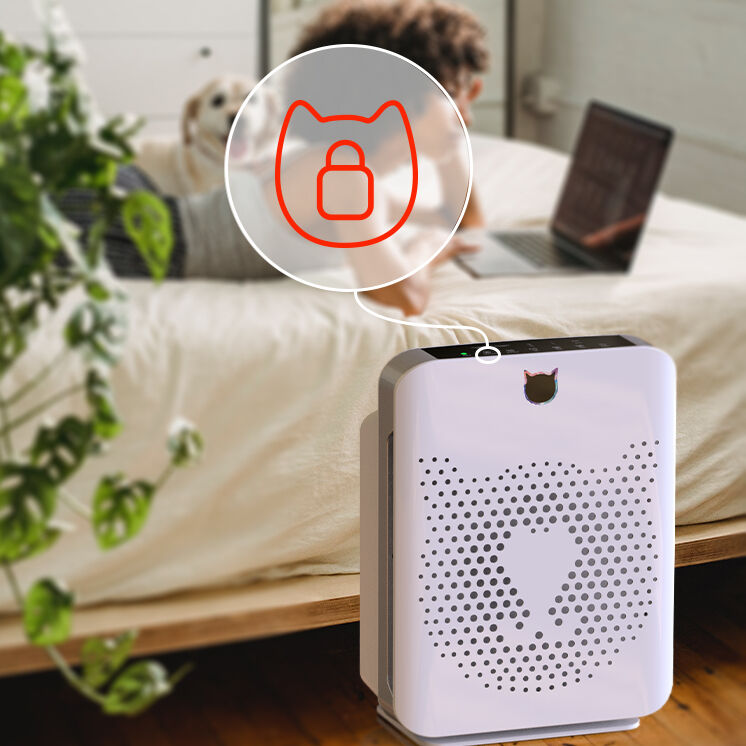Pet Air Purifier Buying Tips: What Should B2B Buyers Consider?
The Complete Guide to Commercial Pet Air Purification Systems
For veterinary clinics, pet boarding facilities, and animal shelters, maintaining pristine air quality isn't just about comfort—it's essential for the health of both animals and staff. A pet air purifier serves as a critical component in professional pet care environments, removing allergens, dander, and odors while creating a healthier atmosphere for all occupants. As the pet care industry continues to grow, the demand for effective air purification solutions has never been higher.
Making an informed decision about commercial pet air purification systems requires careful consideration of multiple factors. This comprehensive guide will explore the essential aspects B2B buyers need to evaluate when selecting pet air purifiers for their facilities, ensuring optimal air quality and return on investment.
Core Technologies in Professional Pet Air Purification
HEPA Filtration Systems
High-Efficiency Particulate Air (HEPA) filtration remains the gold standard in air purification technology. True HEPA filters can capture 99.97% of particles as small as 0.3 microns, including pet dander, dust, and microscopic allergens. For professional pet care facilities, this level of filtration is crucial as it effectively removes airborne particles that can cause respiratory issues in both animals and humans.
When evaluating pet air purifier systems with HEPA technology, buyers should look for models that specify their HEPA class and replacement requirements. Commercial-grade systems often feature medical-grade HEPA filters that can handle continuous operation in high-traffic environments.
Activated Carbon Technology
Activated carbon filters are essential for tackling the unique challenges of pet care facilities. These filters excel at absorbing volatile organic compounds (VOCs), pet odors, and harmful gases. The most effective commercial pet air purifiers combine significant amounts of activated carbon with specialized treatments to target specific pet-related odors.
Professional buyers should examine the weight and quality of the activated carbon used, as these factors directly impact the filter's effectiveness and longevity. Higher-end systems often feature multiple pounds of activated carbon, ensuring extended performance in demanding commercial environments.
Size and Coverage Considerations
Space Calculation Methods
Determining the right size pet air purifier begins with accurate space assessment. Commercial facilities need to calculate their total cubic footage and consider factors like ceiling height, room divisions, and air exchange rates. Professional-grade air purifiers typically specify their Clean Air Delivery Rate (CADR) and the recommended room size for optimal performance.
Experts recommend choosing units that can process the room's entire air volume at least 4-5 times per hour in professional pet care settings. This higher air exchange rate helps maintain consistently clean air despite continuous pet activity and frequent door openings.
Multi-Unit Strategy
Larger facilities often benefit from deploying multiple pet air purifier units strategically throughout the space. This distributed approach ensures more uniform air quality and provides redundancy in case of maintenance needs. When planning a multi-unit strategy, consider traffic patterns, pet housing locations, and grooming areas to optimize placement.
Strategic positioning of multiple units can also help create zones of heightened air purification where needed, such as isolation areas or spaces housing animals with respiratory sensitivities.

Maintenance and Operational Efficiency
Filter Replacement Schedules
Commercial pet air purifiers require regular maintenance to maintain optimal performance. Understanding the filter replacement schedule and associated costs is crucial for accurate budget planning. Professional units typically offer longer filter life than consumer models but may require more expensive replacements due to their higher capacity and quality.
Smart systems with filter life indicators help facilities maintain proper maintenance schedules, while modular designs can simplify the replacement process and minimize downtime. Consider these features when evaluating total ownership costs.
Energy Consumption Analysis
Operating costs significantly impact the long-term value of pet air purifier systems. Energy-efficient models may command higher upfront prices but can deliver substantial savings over time. Look for units with Energy Star certification and variable speed settings that can adjust to air quality conditions.
Advanced models featuring automatic operation modes can optimize energy usage by adjusting fan speeds based on detected air quality levels, providing both economic and environmental benefits.
Smart Features and Integration Capabilities
Remote Monitoring Systems
Modern commercial pet air purifiers often include smart features that enable remote monitoring and control. These capabilities allow facility managers to track air quality metrics, adjust settings, and receive maintenance alerts through mobile apps or building management systems. This level of control can be particularly valuable for multi-location operations or facilities with varying air quality needs throughout the day.
Look for systems that offer detailed air quality reporting and historical data analysis, as these features can help optimize operations and demonstrate the value of air purification investments to stakeholders.
Integration with Facility Management
The ability to integrate pet air purifier systems with existing facility management infrastructure can streamline operations and improve overall efficiency. Advanced units may offer APIs or standard protocols for connection with building automation systems, enabling coordinated control of air quality alongside other environmental systems.
Consider future expansion plans and technology roadmaps when evaluating integration capabilities, as these features can become increasingly important as facilities grow or modernize.
Frequently Asked Questions
How often should commercial pet air purifiers be serviced?
Professional pet air purifiers typically require filter changes every 6-12 months, depending on usage intensity and environmental conditions. However, pre-filters may need monthly cleaning, and carbon filters might require replacement every 3-4 months in high-traffic facilities. Regular professional servicing is recommended annually to ensure optimal performance and extend unit life.
What certifications should B2B buyers look for in pet air purifiers?
Key certifications include AHAM Verified CADR ratings, Energy Star certification for energy efficiency, UL certification for safety, and compliance with relevant industry standards. For medical-grade applications, look for additional certifications such as ISO 14644 or specific healthcare facility requirements.
How can facilities measure the effectiveness of their air purification system?
Professional air quality monitoring equipment can measure particulate levels, VOCs, and other pollutants before and after installation. Many commercial-grade pet air purifiers include built-in sensors and monitoring systems that track air quality metrics in real-time, providing concrete data on system performance and effectiveness.

 EN
EN
 AR
AR
 NL
NL
 FR
FR
 DE
DE
 EL
EL
 HI
HI
 IT
IT
 JA
JA
 KO
KO
 PL
PL
 PT
PT
 ES
ES
 ID
ID
 VI
VI
 TH
TH
 TR
TR
 MS
MS
